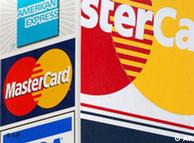Neuromarketing is a new field of marketing which uses medical technologies such as functional Magnetic Resonance Imaging (fMRI) to study the brain's responses to marketing stimuli. Researchers use the fMRI to measure changes in activity in parts of the brain and to learn why consumers make the decisions they do, and what part of the brain is telling them to do it.
Marketing analysts will use neuromarketing to better measure a consumer's preference, as the verbal response given to the question "Do you like this product?" may not always be the true answer. This knowledge will help marketers create products and services designed more effectively and marketing campaigns focused more on the brain's response.
Neuromarketing will tell the marketer what the consumer reacts to, whether it was the color of the packaging, the sound the box makes when shaken, or the idea that they will have something their co-consumers do not.
The word "neuromarketing" was coined by Ale Smidts in 2002[1]
Priming
One of the main psychology principles behind marketing is the concept of priming. Priming a subject with a certain topic such as "dog" sets off an electrochemical reaction in the neural frameworks that code for dogs. Subsequent exposure to dog-related stimuli is processed faster because of the electrochemical priming.
Assimilation is the process by which new information is assimilated or incorporated into ones' existing neural structures. Advertising agencies know how important it is to repeat their messages so that priming and assimilation can take place. Priming usually occurs without the conscious awareness of the individual, even though the subsequent behavior of the individual may be altered by the priming.
Coke vs. Pepsi
In a study from the group of Read Montague, the director of the Human Neuroimaging Lab and the Center for Theoretical Neuroscience at Baylor College of Medicine, published in 2004 in Neuron[2], 67 people had their brains scanned while being given the "Pepsi Challenge", a blind taste test of Coca-Cola and Pepsi. Half the subjects choose Pepsi, and Pepsi tended to produce a stronger response than Coke in the brain's ventromedial prefrontal cortex, a region thought to process feelings of reward. But when the subjects were told they were drinking Coke three-fourths said that Coke tasted better. Their brain activity had also changed. The lateral prefrontal cortex, an area of the brain that scientists say governs high-level cognitive powers, and the hippocampus, an area related to memory, were now being used, indicating that the consumers were thinking about Coke and relating it to memories and other impressions. The results demonstrated that Pepsi should have half the market share, but in reality consumers are buying Coke for reasons related less to their taste preferences and more to their experience with the Coke brand. However, it should be noted that Pepsi is sweeter than Coke, and thus may do better in taste tests where only a small sample is given. Many people who prefer small amounts of Pepsi would probably rather consume an entire can of Coke to a can of Pepsi because people often grow tired of very sweet flavors.
See also
References
Notes
- ^ David Lewis & Darren Brigder (July/August 2005). "Market Researchers make Increasing use of Brain Imaging". Advances in Clinical Neuroscience and Rehabilitation 5 (3): 35+.
- ^ Samuel M. McClure, Jian Li, Damon Tomlin, Kim S. Cypert, Latané M. Montague, and P. Read Montague (2004). "Neural Correlates of Behavioral Preference for Culturally Familiar Drinks". Neuron 44: 379–387.
Others
- Mary Carmichael (November 2004). Neuromarketing: Is It Comping to a Lab Near You?. PBS (Frontline, "The Persuaders"). Retrieved on 2007-06-12.
- Media Maze: Neuromarketing, Part I
- Commercial Alert's page on neuromarketing
- The practical approach for marketers
External links
经济纵横 | 2008.08.16
使用信用卡的人更幸福
神经营销学(Neuromarketing)是一门年轻的学科,刚有20多年的历史。不过,它在促销方面,还是非常有用武之地的。这门学科的目的在于,对头脑中的决策过程进行机械性描述。
对一名测试人进行观察并用脑电图做显示发现,如果他做决定是否购一份音乐作品时,价格从原先的1元降到了43分,他很快便做出购买的决定, 这是,脑电图显示出他特别强的快感。如果价格不是从1元下降的,而是从50分,测试者做决定需要的时间便长些,购买后的快感也相对小些。于是,在现实生活 中,你会在商店里到处看到一个商品标价时,总是原价也写在那里,为的是让人们看到原价同现价之间的区别,买起来更易下手,买后更有快感。
今天上市的P.M.杂志发表了一份最新的神经营销学研究结果。该结果显示了一个最基本的感情趋势,即使用信用卡付帐的人更幸福快乐,因为使用了这张小小塑料卡,那种对钱的损失感暂时没有出现,它被推到了未来。
科学工作者认为,商业人士应该好好研究神经营销学,这门科学可以为改善营销助一臂之力。这门学科的目的在于,对头脑中的决策过程进行机械性描述。学科研究得出的结论,直接用于商业领域。
比如人们知道,男性眼前如果"性"的画面出现频率高,他们做出勇于投资风险项目的频率也高。有了这样的知识,银行为了吸引投资,是否知道该怎么做了呢?是否在广告里多加些性感画面呢?试试吧!
这一学科还知道,不同的国家,不同的民族,对同一事物有着不同的感情价值观。比如,美国男人更权利感兴趣,而日本男人则更被社会关系所吸引。

沒有留言:
張貼留言